East India Company vs Maratha Empire: Sword vs Strategy in Colonial India
Part III: Study of East India Company and Foreign rule in Bharat
Two Models of Conquest: The Sword and The Ledger
After having explored how the Treaty of Allahabad legalized corporate rule and how the East India Company transformed profit into power, we now turn to the defining civilizational confrontation — East India Company vs Maratha Empire.
The 18th century in India witnessed not merely a clash of armies, but of ideologies and destinies. On one side stood the fading Islamic sword that had conquered by force; on the other, the resurgent Hindu power of the Marathas, rising to reclaim indigenous sovereignty; and between them, the calculating corporate colonialism of the East India Company, which conquered through contracts and cunning. This three-way collision determined who would rule Bharat — the heirs of the soil or a trading company that weaponized division and diplomacy to subdue a civilization.

The story of how the East India Company conquered India is often told as a tale of European military superiority over backward Asian powers. This narrative is both convenient and false. The reality was far more complex: the Company succeeded not because of superior force, but because it exploited the very divisions that Islamic rule had created in Indian society. Where the Mughals had used the sword to conquer and the Marathas used guerrilla brilliance to resist, the British used something far more insidious—they weaponized India’s internal fractures, religious tensions, and political fragmentation.
This blog continues the Study of East India Company and Foreign Rule in Bharat by examining the fundamental difference between Islamic conquest methods and British colonial strategies, showing how the East India Company vs Maratha Empire struggle defined Bharat’s civilizational destiny.
The Islamic Sword: Conquest Through Force and Faith
To understand why Islamic rule in India collapsed so quickly and completely, we must first understand its fundamental nature. Islamic conquest of India, from the early medieval period through the Mughal Empire, followed a consistent pattern that combined military force with religious ideology.
The Model of Islamic Conquest
Islamic rulers conquered through overwhelming military force, established their authority through religious dominance, and maintained control through a combination of military presence and the subordination of non-Muslim populations. The pattern was remarkably consistent across centuries and continents:
- Military Conquest: Armies commanded by Islamic rulers invaded, defeated Hindu kingdoms, and established political control.
- Religious Hierarchy: The conquered territories were governed according to Islamic law (Sharia), with non-Muslims assigned subordinate status as dhimmis—protected but second-class subjects who paid jizya (religious tax) in exchange for the right to practice their faith.
- Cultural Suppression: Hindu temples were destroyed primarily by Aurangzeb and Tipu Sultan, replaced with mosques. Hindu religious practices were restricted. Sanskrit learning declined as Persian became the language of administration and elite culture.
- Economic Extraction: The Jazia Tax, agricultural revenues, and tribute from subordinate Hindu rulers funded Islamic courts and military campaigns.
- Conversion Pressure: While forced conversion was not universal, the systematic disadvantages faced by Hindus—higher taxation, legal discrimination, limited opportunities in administration—created constant pressure toward conversion.
This model worked effectively for centuries. The Delhi Sultanate, followed by the Mughal Empire, controlled most of India through this combination of military force and religious dominance. Yet it contained fatal weaknesses that would eventually destroy it.
The Fatal Weaknesses of Islamic Rule
The Islamic conquest model in India suffered from structural weaknesses that became apparent once Hindu resistance emerged:
1. Dependence on Military Force: Islamic rule in India always remained a military occupation. Unlike indigenous Hindu kingdoms that derived legitimacy from cultural and religious connections to their subjects, Islamic rulers were foreign conquerors whose authority rested entirely on military superiority. Once that military superiority was challenged—as Shivaji would demonstrate—the entire structure became vulnerable.
2. Religious Alienation: By treating the Hindu majority as religious inferiors, Islamic rulers ensured that they would never secure genuine loyalty from their subjects. Hindus might submit to Islamic rule out of necessity, but they would never embrace it. This created a permanent alienation between rulers and ruled that could be exploited by any challenger.
3. Economic Inefficiency: The jizya system and religious discrimination meant that Islamic rulers never fully tapped into the economic and human potential of their Hindu subjects. Talented Hindus were systematically excluded from positions of power, depriving Islamic states of vast human resources.
4. Fragmentation: Islamic rulers in India never developed stable succession systems. Each death of a ruler triggered succession wars that weakened the empire. Regional governors became effectively independent, creating the very fragmentation that later invaders would exploit.
5. Cultural Rigidity: Islamic rule’s religious foundation made it culturally inflexible. It could conquer Hindu kingdoms but could never truly integrate Hindu society. This cultural rigidity created a brittle empire that appeared strong but would shatter once seriously challenged.
Shivaji and the Maratha Resistance: The Hindu Counter-Model
The Maratha resistance under Chhatrapati Shivaji Maharaj represented something fundamentally different from both Islamic conquest and later British colonialism. Shivaji created a model of Hindu resistance that should have—and could have—liberated India from foreign rule and established indigenous Hindu sovereignty.
Shivaji’s Revolutionary Military Strategy
At the heart of Shivaji Maharaj’s military success were the core principles of guerrilla warfare: surprise, mobility, and intimate knowledge of the terrain. He mastered the art of striking swiftly and unpredictably, catching his larger and often more conventionally powerful adversaries off guard.
His Ganimi Kava (Guerrilla Warfare) tactics became the cornerstone of Maratha military strategy, allowing his forces to exploit the weaknesses of larger, slower-moving armies. This strategy involved hit-and-run attacks, ambushes, night raids, and deception to weaken the enemy.
Shivaji’s military genius lay not in matching Islamic armies in conventional warfare—where they held advantages in numbers, cavalry, and artillery—but in rendering those advantages irrelevant. His strategies included:
1. Terrain Mastery:
The Western Ghats’ rugged terrain became the Marathas’ greatest advantage. Shivaji’s forces knew every pass, every hidden valley, every water source. They could appear suddenly, strike decisively, and vanish before superior forces could respond.
2. Fort-Based Strategy:
Shivaji established a network of strategically positioned forts that controlled trade routes and served as bases for raids. These forts were nearly impregnable to traditional siege methods and allowed small Maratha garrisons to tie down much larger enemy forces.
3. Cavalry Supremacy:
The Maratha cavalry was light, fast, and disciplined. They could cover vast distances quickly, strike supply lines and isolated posts, and retreat before enemy reinforcements arrived.
4. Intelligence Network:
Shivaji Maharaj developed a highly sophisticated intelligence network, rooted in local knowledge and supported by informants who tracked enemy movements while ensuring his own plans remained secret. This system reflected principles articulated centuries earlier in Kautilya’s Arthashastra, which emphasized espionage, economic foresight, and moral statecraft as the essential pillars of national security and governance.
His model of administration did not arise in isolation but emerged as a natural continuation of the long Hindu tradition of strategic governance. As examined in Kautilya: The Timeless Sage of Statecraft and Strategy, Kautilya had laid the foundations of practical governance—where strategic prudence was inseparable from ethical restraint. Later interpretations, such as Kautilya’s Ethical Imperative: Governance with Ethics and Spirituality, reaffirm that political power in the Hindu view was always tempered by dharmic responsibility.
This intellectual lineage found renewed expression in the Maratha era. Many of Shivaji’s administrative innovations—decentralized command, merit-based appointments, an efficient intelligence network, and transparent taxation—mirror the Arthashastric principles discussed in Kautilya’s Strategic Wisdom for Modern Governance. Through these continuities, the Maratha state became a living evolution of Kautilya’s science of governance—rooted in ethics, adapted through necessity, and realized through action.
5. Psychological Warfare:
Using disinformation and superior tactics, Shivaji routed forces twenty times larger than his own. His raids created an aura of invincibility that demoralized Mughal forces.
By avoiding direct confrontation with the powerful Mughal Empire, Shivaji ensured the preservation of his resources and manpower. This strategic choice allowed him to focus on economic development within his kingdom.
The Hindu Political Renaissance
But Shivaji’s significance extended far beyond military tactics. He represented the revival of Hindu political consciousness and the possibility of indigenous Hindu sovereignty:
Cultural Restoration:
Shivaji deliberately revived Hindu symbols, Vedic ceremonies, and Sanskrit learning as instruments of civilizational renewal. His coronation as Chhatrapati was performed according to sacred Hindu rites, publicly affirming the legitimacy of Hindu sovereignty and cultural self-respect.
This synthesis of pragmatic statecraft and dharmic responsibility reflected the broader philosophical heritage envisioned by ancient thinkers like Kautilya. As discussed in Kautilya Beyond Arthashastra: Exploring the Broader Themes of Hindu Philosophy and Kautilya’s Enduring Legacy: Impact on Later Thinkers, governance in the Hindu worldview was never separated from moral duty, cultural identity, or spiritual purpose. Shivaji’s reign embodied this ideal—where statecraft served not only political order but also the restoration of civilizational dignity.
Religious Tolerance:
Unlike Islamic rulers, Shivaji practiced genuine religious tolerance. Muslims in his realm faced no discriminatory taxes or restrictions, and many served in his administration. Yet the deepest moral contrast appeared in the treatment of women during war.
Where Mughal and Sultanate chronicles record women as spoils of victory, Shivaji forbade even a glance of disrespect. He protected captured women, sent them home with honor, and declared strī-maryādā—the sanctity of womanhood—above triumph itself. Valor, in his dharmic code, could never be divorced from virtue. To understand full context please refer to the Annexure.
Administrative Innovation:
Shivaji created an efficient administration based on merit rather than religion or birth—echoing Kautilya’s vision of pragmatic yet ethical governance, as detailed in Kautilya Arthashastra: Bridging Ancient Wisdom with Modern Governance. His revenue system was fair and transparent, building loyalty among his subjects and aligning state policy with dharmic economics.
Economic Development:
Instead of pure extraction, Shivaji invested in trade, agriculture, and infrastructure, creating prosperity that strengthened his state.
Social Reform:
Shivaji pragmatically reduced caste rigidity in administration, recruiting capable individuals from varied backgrounds while upholding traditional dharmic order. His respect for women and protection of civilian honor marked a civilizational contrast to both Mughal oppression and later Company exploitation.
The Maratha Expansion: A Hindu Empire Rising
After Shivaji’s death in 1680, his successors expanded the Maratha Empire dramatically. By the early 18th century, Maratha forces raided deep into Mughal territory, extracting chauth (tribute) from Mughal provinces, effectively reversing the flow of wealth from conquerors to indigenous powers.
The Maratha expansion demonstrated several crucial points:
- Hindu Military Capability: The stereotype of Hindus as militarily inferior was shattered. Maratha armies defeated Mughal forces repeatedly, proving that Hindu society could produce formidable military power when properly organized.
- Alternative Governance Model: Maratha territories demonstrated that Hindu rule could be efficient, prosperous, and religiously tolerant—a stark contrast to Islamic conquest models.
- Economic Viability: The Maratha state was economically self-sufficient and growing, proving that indigenous Hindu sovereignty was practically viable, not merely a romantic ideal.
- Political Unity Potential: The Maratha confederacy, despite internal tensions, demonstrated that Hindu political unity was achievable and could challenge any external threat.
The Battle of Panipat (1761): The Catastrophe That Opened the Door
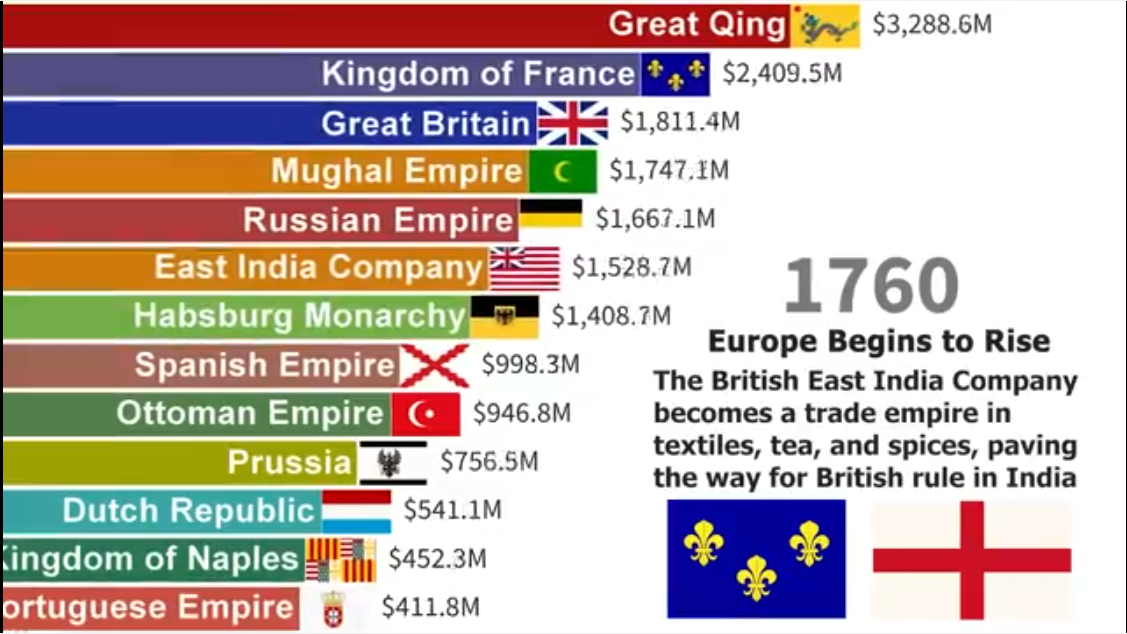
World Economy Share in 1761: The year 1761 marks a catastrophic turning point. The Third Battle of Panipat devastated Maratha military power, creating the power vacuum that the East India Company would exploit. Notice how this moment of Maratha weakness coincides with growing British economic presence.
The Third Battle of Panipat on January 14, 1761, was one of the most consequential battles in Indian history—not for what it accomplished, but for what it prevented. The Maratha army, led by Sadashivrao Bhau, faced the Afghan forces of Ahmad Shah Durrani in a massive confrontation involving perhaps 100,000 soldiers on each side.
The Maratha defeat was catastrophic. An estimated 40,000 Maratha soldiers died on the battlefield, along with countless civilians who had accompanied the army. The cream of Maratha military leadership—commanders who had led the expansion northward—perished in a single day.
The consequences were profound:
1. Military Devastation: The Marathas lost an entire generation of military leadership and experienced soldiers. It would take decades to rebuild such forces.
2. Political Fragmentation: The centralized Maratha expansion under the Peshwa’s direction collapsed. The confederacy fragmented into competing power centers—the Peshwa in Pune, the Holkars in Indore, the Scindias in Gwalior, the Bhonsles in Nagpur, and the Gaekwads in Baroda.
3. Psychological Impact: The defeat shattered the perception of Maratha invincibility that had been built over decades. It emboldened both regional powers and European companies to challenge Maratha authority.
4. British Opportunity: Most crucially, Panipat occurred just four years before the Treaty of Allahabad. The Marathas, who should have been the natural power to fill the vacuum left by Mughal collapse, were instead devastated and fragmented—precisely when the East India Company vs Maratha Empire dynamic was beginning to take shape. The vacuum created by Panipat directly enabled the Company to replace the sword with the signature, converting battlefield defeats into legal conquests like the East India Company Treaty of Allahabad (1765), which became the economic foundation of British rule.
Panipat represents one of history’s great tragedies. Had the Marathas won—or even fought to a draw—the trajectory of Indian history would have been fundamentally different. A united, victorious Maratha confederacy in 1761 could have contained or expelled the British before they established their base in Bengal. Instead, Panipat created the conditions that made British conquest possible.
East India Company Strategy: Neither Sword Nor Valor
By 1765, the East India Company vs Maratha Empire confrontation had begun to redefine India’s future. Where Panipat had broken Hindu unity, the East India Company Treaty of Allahabad gave British merchants legal entry into India’s political system. It was conquest not by force, but by financial design.
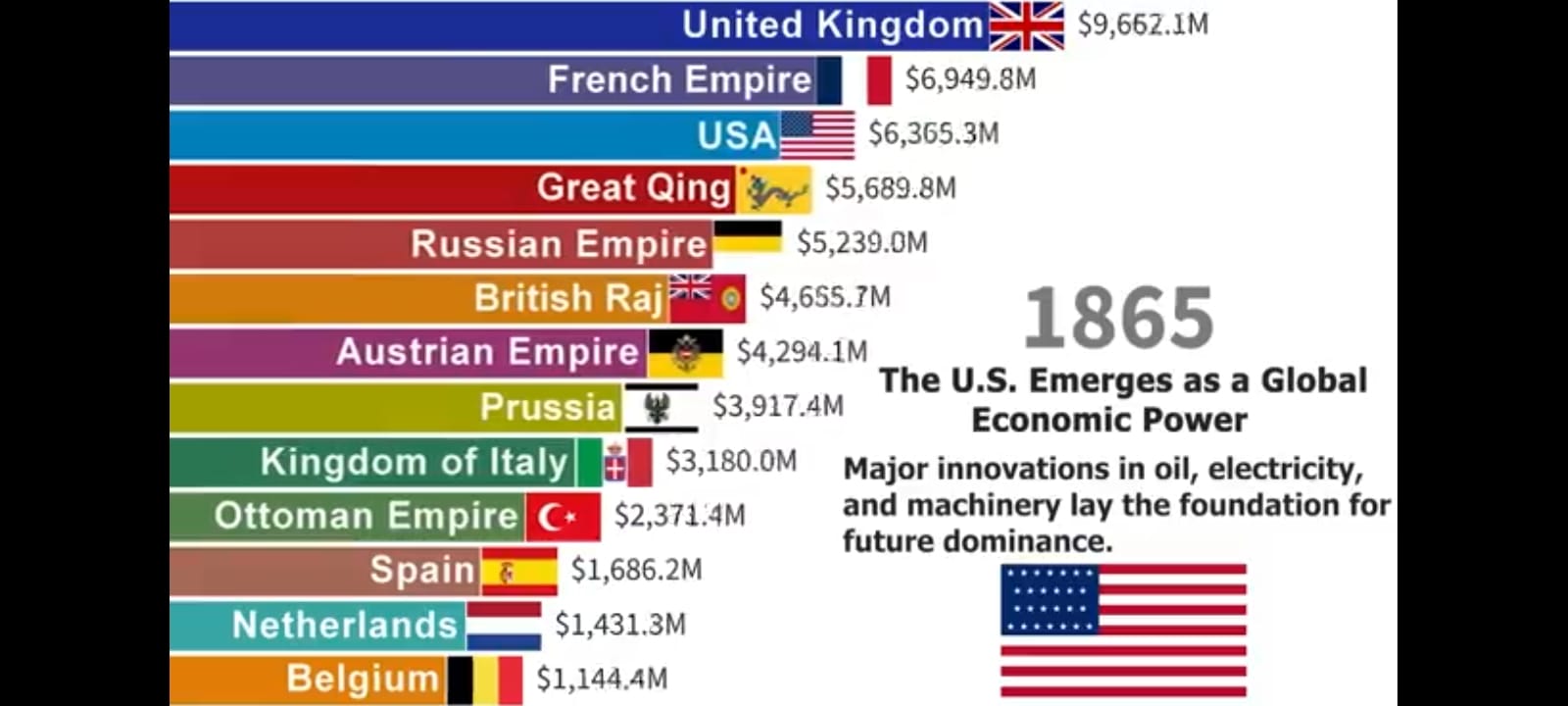
World Economy Share in 1765: Just four years after Panipat, the Treaty of Allahabad transfers Bengal’s wealth to the Company. The Marathas, devastated and fragmented, cannot prevent this crucial British acquisition of revenue-generating territory.
The East India Company’s conquest of India followed a fundamentally different model from both Islamic sword conquest and Maratha military resistance.
The British success in the East India Company vs Maratha Empire contest was not due to overwhelming military force—their armies were often smaller—but to superior strategy that exploited India’s divisions.
The British Strategic Advantages
1. Exploiting Religious Divisions: The British understood and exploited the deep alienation between India’s Hindu majority and Islamic rulers. Where Islamic conquest had created resentment through religious discrimination, the British positioned themselves as religiously neutral arbiters—neither Hindu nor Muslim, they could appeal to both by promising relief from the other.
The Battle of Plassey perfectly illustrated this strategy. Hindu merchants and financiers, particularly the Jagat Seth banking family, supported the British against the Muslim Nawab not from any affection for the British, but from resentment of Islamic rule. The British didn’t need to convince Hindus that British rule was good—they only needed to convince them that British rule was preferable to continued Islamic domination.
2. Subsidiary Alliance System: The British developed the subsidiary alliance system—a brilliantly insidious method of gaining control without the costs of direct conquest. Indian rulers who accepted subsidiary alliances agreed to:
- Maintain British troops in their territory
- Pay for those troops
- Accept British “advice” on administration
- Surrender control of foreign relations
- Exclude other Europeans from their territories
In exchange, the British promised “protection” against external threats and internal rebellions. The result was that Indian rulers paid to be subjugated, maintaining British troops that ensured their own subordination. The Maratha princes were obliged to sign the familiar subsidiary alliance the EIC imposed on the vanquished, leaving them only in control of minor domestic affairs.
3. Divide and Rule: The British systematically prevented any unity among Indian powers. They allied with the Marathas against the Mughals, then with Mughal authorities against the Marathas. They supported one Maratha chief against another, one Muslim nawab against his rival. British policy consistently ensured that no Indian power could become strong enough to challenge British interests.
4. Legal and Constitutional Manipulation: Unlike conquerors who openly claimed sovereignty through military victory, the British acquired power through treaties, grants, and legal instruments. The Treaty of Allahabad gave them Diwani rights “granted by” the Mughal Emperor. Subsidiary alliances were “voluntary” agreements with Indian rulers. This legal subterfuge made resistance more difficult—rulers were not openly conquered but had “agreed” to British control.
5. Economic Warfare: The British used economic power as effectively as military force. Bengal’s revenues funded expansion elsewhere. Trade monopolies destroyed indigenous industries while enriching the Company. Control over credit and banking gave them leverage over rulers and merchants. They conquered as much through ledgers as through bayonets.
6. Superior Organization: The Company maintained disciplined administration, systematic record-keeping, and coordinated strategy across regions. Indian rulers, by contrast, often suffered from court intrigue, succession disputes, and uncoordinated policies. British officials, answerable to distant shareholders, could pursue long-term strategies that Indian rulers, caught in immediate political pressures, could not match.
Why Islamic Rule Collapsed So Completely
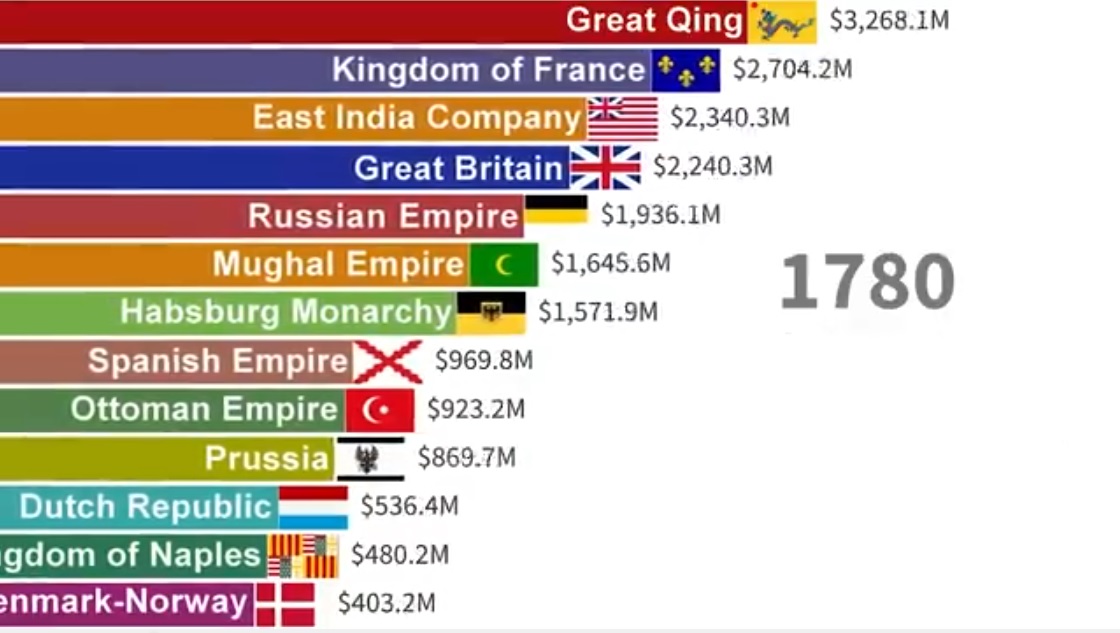
World Economy Share in 1780: Fifteen years after Treaty of Allahabad, the Mughal Empire has effectively ceased to exist as an economic power. The rapid collapse of Islamic rule—from dominance to irrelevance in just seven decades—stands in stark contrast to the British consolidation of power.
The speed and completeness of Islamic rule’s collapse in 18th century India is remarkable. In 1707, the Mughal Empire was the dominant power; by 1780, its authority survived largely in name, with the Emperor dependent on the East India Company for survival—a symbolic monarch within the emerging East India Company vs Maratha Empire era. This collapse occurred not because Muslims were militarily incompetent—the early Mughal armies were formidable—but because the Islamic conquest model contained fatal structural weaknesses.
Religious Alienation Made Resistance Inevitable
Islamic rule in India rested on the subjugation of the Hindu majority. This created a permanent alienation that made resistance inevitable once Islamic military superiority was challenged. Shivaji demonstrated that the Mughal army could be defeated, and that Hindu society would enthusiastically support Hindu resistance to Islamic rule.
Once the perception of Islamic invincibility was shattered, the alienation between rulers and ruled became fatal. Hindus who had submitted to Islamic rule from necessity now saw possibilities for liberation. The energy that might have defended a legitimate indigenous government was instead directed toward overthrowing foreign Islamic domination.
No Institutional Stability
Islamic rule in India never developed stable institutions independent of individual rulers. Each succession triggered civil wars. Each strong ruler was followed by weak successors. Regional governors became independent warlords. The empire could expand through conquest but could never create the institutional foundations for enduring stability.
When Aurangzeb died in 1707 after decades of failed campaigns against the Marathas, the empire immediately fragmented. His successors lacked the military force to maintain unity or the political legitimacy to command loyalty. Within two generations, the empire that had dominated India was reduced to impotence.
No Economic Integration
Islamic rulers extracted wealth from Hindu society but never integrated economically with it. The jizya tax and religious discrimination meant that Hindu economic potential was never fully utilized. The economy remained a colonial extraction system even under Islamic rule—wealth flowed from Hindu producers to Islamic courts and armies.
When Islamic military power declined, there was no economic basis for maintaining the empire. Hindu merchants, artisans, and bankers had no stake in preserving Islamic rule. Indeed, they often actively worked against it, as demonstrated at Plassey.
No Cultural Integration
Perhaps most fatally, Islamic rule never achieved cultural integration with Hindu society. After six centuries of Islamic political dominance, Hindu society remained culturally Hindu. Sanskrit learning continued in diminished form. Hindu temples, though many were destroyed, survived. Hindu festivals and customs persisted.
This cultural separation meant that Islamic rule remained forever alien to the majority population. When military force could no longer maintain control, there was no cultural foundation to preserve it. Hindus did not mourn the fall of the Mughal Empire because it had never been their empire—it was always a foreign conquest.
Why Maratha Resistance Failed: The Tragedy of Fragmentation
World Economy Share in 1800: By 1800, the Maratha confederacy is fragmenting while British power consolidates. The economic data shows the tragedy—the Marathas, who should have been India’s indigenous rulers, are being systematically weakened while British economic dominance grows.
The Maratha failure to consolidate Hindu sovereignty represents one of history’s great tragedies. They had defeated the Mughals militarily, demonstrated the viability of Hindu governance, and established control over vast territories. Yet they ultimately fell to the British not because they were militarily inferior, but because they could not maintain political unity.
Internal Divisions
The Maratha confederacy’s greatest weakness was its internal structure. After Shivaji, the Peshwas (prime ministers) increasingly dominated the Maratha state, reducing the descendants of Shivaji to figureheads. Meanwhile, powerful Maratha families—Holkars, Scindias, Bhonsles, Gaekwads—became effectively independent rulers of their own territories.
These chiefs often competed with each other as vigorously as they fought external enemies. The Holkars and Scindias engaged in bitter rivalry. The Peshwa’s authority was repeatedly challenged. This fragmentation prevented the unified response necessary to counter British expansion.
Panipat’s Long Shadow
The catastrophe at Panipat in 1761 never fully healed. The loss of military leadership and experienced soldiers took decades to replace. The psychological impact—the shattering of Maratha confidence—persisted. The political fragmentation that Panipat accelerated was never reversed.
British Exploitation of Divisions
The British brilliantly exploited Maratha divisions. They allied with one Maratha chief against another. They offered subsidiary alliances that appealed to individual chiefs seeking advantage over rivals. They signed separate treaties with different Maratha powers, preventing unified resistance.
The First Anglo-Maratha War (1775–1782) ended largely in stalemate, restoring territories to both sides under the Treaty of Salbai. Warren Hastings, the first Governor-General of Bengal, revealed the limits of early Company power—yet his diplomacy also laid the foundation for the long-term East India Company vs Maratha Empire rivalry that would determine the subcontinent’s political future. But subsequent wars would show how British strategy evolved to exploit Maratha divisions.
The Anglo-Maratha Wars: A Gradual Strangulation
The three Anglo-Maratha Wars (1775-1782, 1803-1805, 1817-1818 (also visit)) demonstrated the gradual strangulation of Hindu resistance:
First Anglo-Maratha War (1775-1782): The British supported rival claimants to the Peshwa position, exploiting internal Maratha succession disputes. Though the war ended with the Treaty of Salbai restoring most territories, it established the precedent of British intervention in Maratha internal affairs.
Second Anglo-Maratha War (1803-1805): It resulted in major loss of territory for the Marathas, including regions around Delhi and in present-day Gujarat falling into direct Company rule. The British defeated the Scindias and Bhonsles separately, preventing unified resistance. Subsidiary alliances were imposed on defeated Maratha chiefs.
Third Anglo-Maratha War (1817-1818): The final destruction of Maratha independence. The Peshwa Baji Rao II, weakened and desperate, had already signed the Treaty of Bassein accepting British protection. When he attempted to reassert independence, the British crushed the last united Maratha resistance. The Maratha princes were obliged to sign the familiar subsidiary alliance the EIC imposed on the vanquished, leaving them only in control of minor domestic affairs. The EIC was now the sole great power in India.
The Tragedy of What Might Have Been
The Maratha failure represents an almost unbearable historical tragedy. They had everything necessary to establish indigenous Hindu sovereignty:
- Military Capability: Proven ability to defeat both Islamic and European forces
- Governance Experience: Successful administration of large territories
- Economic Viability: Control of productive regions and trade routes
- Popular Support: Hindu majority enthusiastically supported Hindu rule
- Cultural Legitimacy: Embodied the revival of indigenous civilization
Yet they failed because they could not maintain the political unity necessary to resist British manipulation. Internal rivalries, succession disputes, and individual ambitions prevented the consolidation that would have made them invincible.
Had the Marathas won at Panipat in 1761, or maintained unity afterward, the British could never have conquered India.
A united Maratha confederacy would have been militarily, economically, and politically superior to the East India Company. But history does not reward what might have been—only what was. The lost unity of the Marathas became the greatest advantage of the Company, and the East India Company vs Maratha Empire struggle that followed determined how Bharat would enter the modern age—through colonization rather than consolidation.
The British-Mughal Alliance Against Hindu Resistance
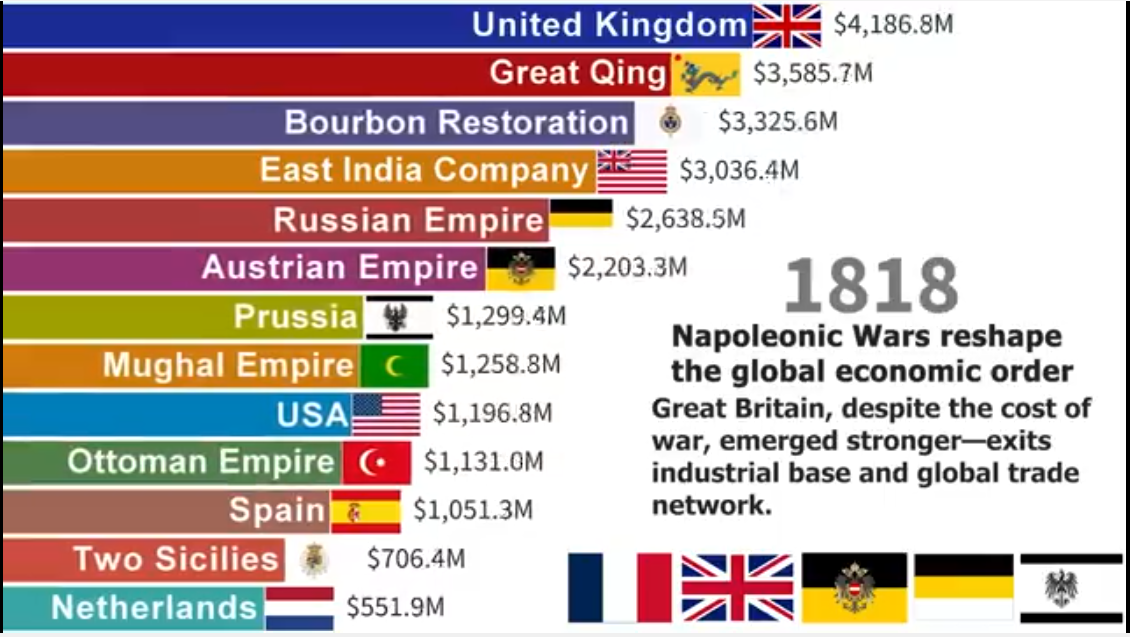
One of the most revealing aspects of British strategy was how they allied with weakened Islamic authorities against Hindu resistance. After acquiring Diwani rights from the Mughal Emperor through the East India Company Treaty of Allahabad 1765, the British maintained the fiction of Mughal sovereignty precisely because it was useful against Hindu powers.
The British “protected” the Mughal Emperor, gave him annual payments, and conducted diplomacy in his name—all while ensuring he had no real power. This arrangement served multiple purposes:
Legal Cover: Operating under nominal Mughal authority provided legal cover for British expansion. They were “collecting revenues on behalf of the Emperor,” not openly conquering territory.
Divide Hindu Forces: Hindu rulers who might have united against foreign conquest were divided by the presence of Islamic authority that some had historically served. Should they oppose the British who claimed to represent the Mughal Emperor?
Play Religious Communities Against Each Other: By positioning themselves as protectors of the Mughal Emperor and guarantors of Muslims’ religious rights, the British could gain Muslim acquiescence while conquering Hindu powers. Then, when conquering Muslim-ruled territories, they positioned themselves as liberators of Hindu populations from Islamic oppression.
This cynical manipulation of religious divisions was devastatingly effective. The British ensured that Hindus and Muslims never united against British rule, because each community could be convinced that British rule was preferable to rule by the other community.
The Fundamental Difference: Sword vs. Strategy
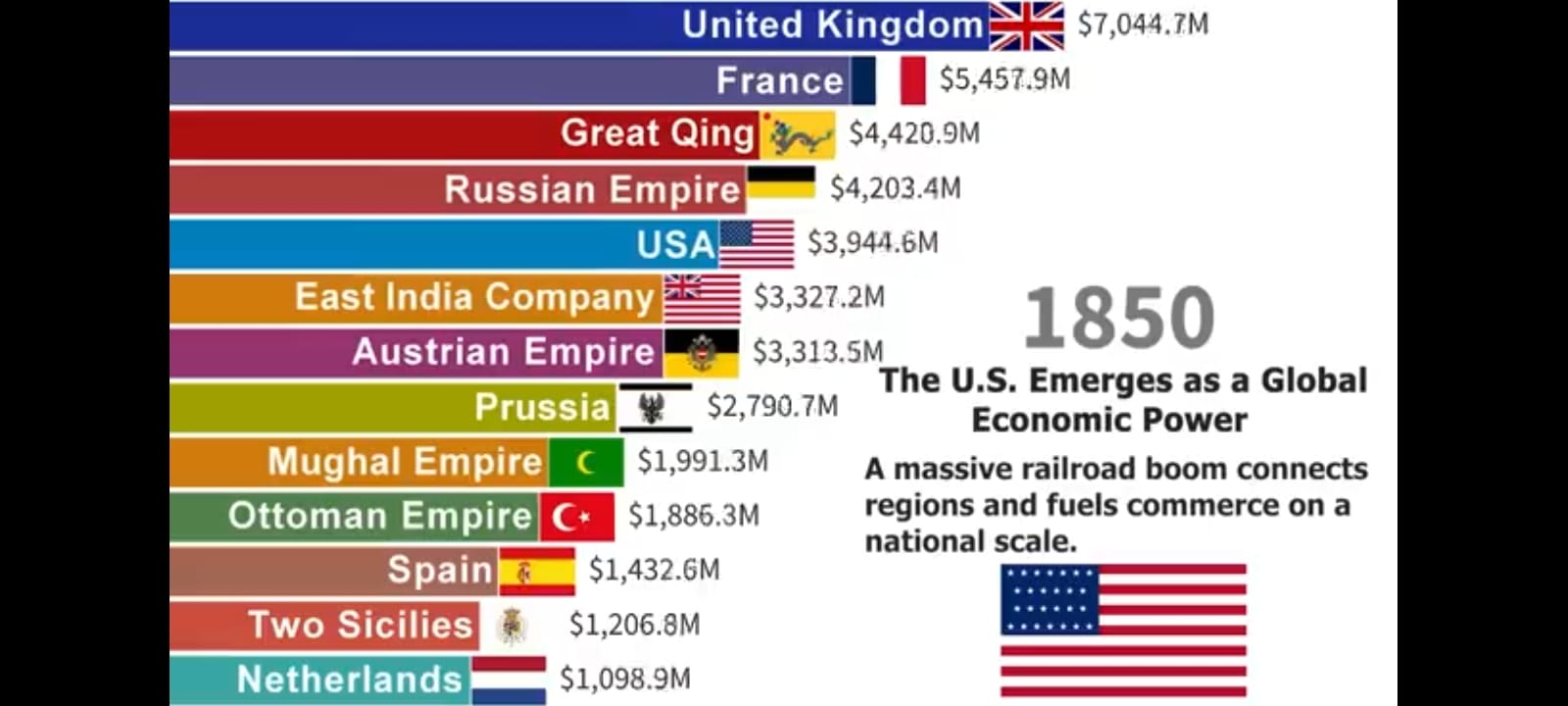
The comparison between Islamic conquest, Maratha resistance, and British colonialism reveals fundamental differences in methods and sustainability:
Islamic Conquest: Force Without Integration
Islamic rule conquered through military force and maintained control through religious dominance. It could defeat Hindu kingdoms but never integrate Hindu society. It extracted wealth but never created economic partnership. It ruled but never governed with popular consent.
This model was effective while military superiority could be maintained, but it was inherently unstable. Once challenged militarily—as Shivaji demonstrated—it collapsed quickly because it had no foundation beyond force.
Maratha Resistance: Military Brilliance Without Political Unity
The Marathas demonstrated that Hindu society could produce formidable military and political power. Shivaji’s guerrilla tactics defeated much larger Mughal forces. Maratha expansion reversed the flow of conquest, extracting tribute from former conquerors.
Yet the Marathas never achieved lasting political unity. Internal rivalries, succession disputes, and the catastrophe at Panipat prevented the consolidation necessary to resist British manipulation. They had military capability but could not translate it into stable sovereignty.
British Strategy: Manipulation Over Military Force
The British succeeded not through superior military force—they often fought with smaller armies than their opponents—but through superior strategy. They exploited religious divisions, prevented Indian unity, used legal manipulation to acquire power gradually, and employed economic warfare as effectively as military campaigns.
Where Islamic conquerors had alienated the Hindu majority and the Marathas had failed to maintain unity, the British succeeded by ensuring that no unified resistance ever emerged. They didn’t need to defeat all of India—they only needed to defeat Indian powers separately while preventing them from uniting.
Conclusion: The Conquest That Should Never Have Happened
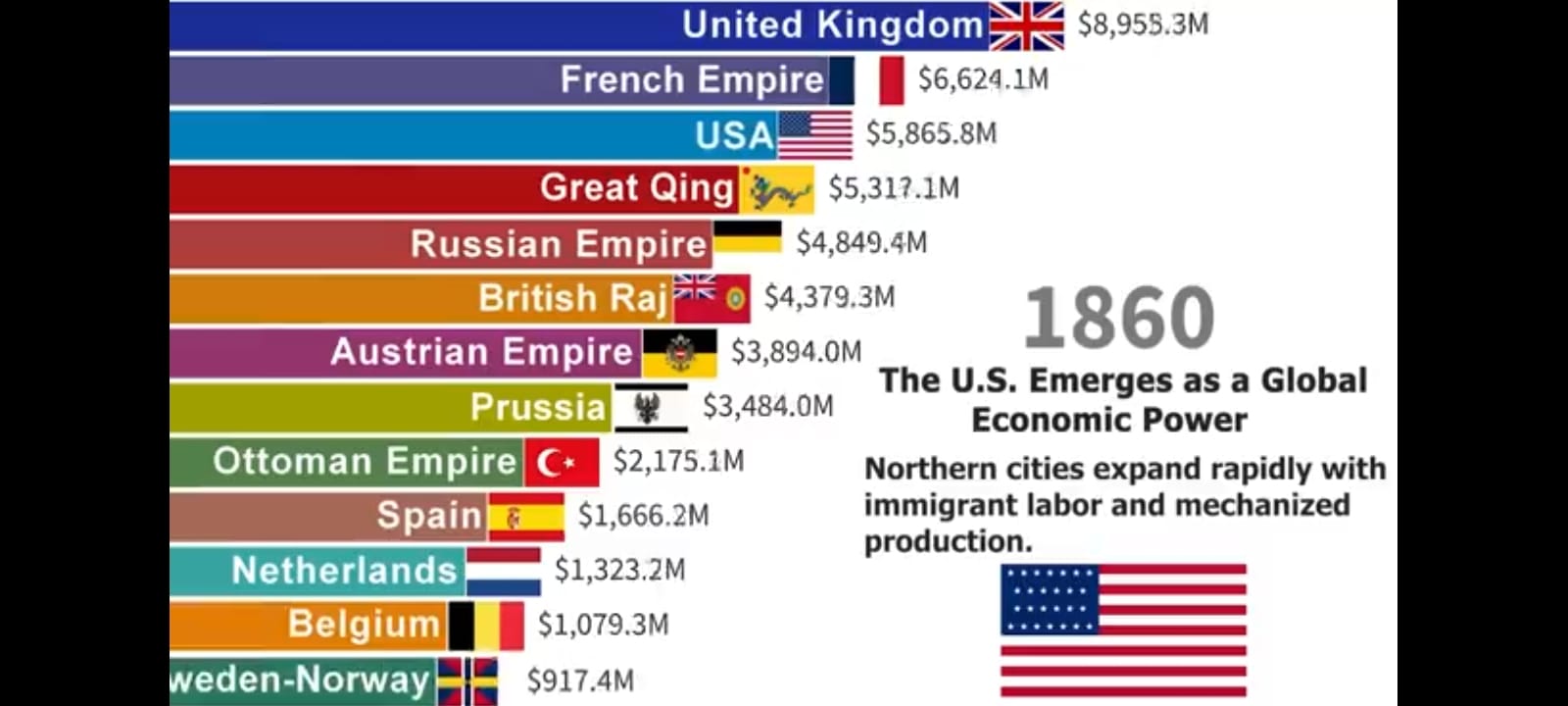
The East India Company vs Maratha Empire saga remains one of history’s most revealing contrasts — a contest between Hindu valor and British strategy, between the sword that defended sovereignty and the ledger that bought it. The Marathas proved India could fight and govern itself; the Company proved that disunity could defeat both courage and culture. Their confrontation defined the last chance for indigenous sovereignty before colonial subjugation became complete.
The Company succeeded not because it was strongest, but because it was shrewdest. It exploited the divisions that Islamic conquest had created in Indian society. It prevented the unity that would have made Hindu resistance invincible. It used economic leverage, legal manipulation, and strategic patience to acquire power gradually while its opponents destroyed each other.
The tragedy is that British conquest should never have happened. India in the mid-18th century was not lacking in military capability—the Marathas had proven that. It was not lacking in economic resources—India still produced a significant portion of global GDP. It was not lacking in administrative experience—Indian kingdoms had governed successfully for millennia.
What India lacked was unity. The religious divisions created by centuries of Islamic rule, the political fragmentation following Mughal decline, and the catastrophe at Panipat combined to prevent the unified resistance that would have expelled the British before they consolidated power.
The Islamic sword had conquered but never integrated. The Maratha resistance had liberated but never unified. The British ledger books conquered them both by ensuring they destroyed each other before challenging British power.
This is the essential lesson of the Company’s conquest: superior strategy defeats superior force when opponents are divided. The British didn’t need to be stronger than India—they only needed to be more united than India’s divided powers. And in that, they succeeded with catastrophic consequences for the subcontinent.
Yet even as the East India Company vs Maratha Empire conflict ended in colonial dominance, the Company was sowing the seeds of its own destruction. The East India Company Treaty of Allahabad had converted trade into governance; by the 19th century, that governance demanded accountability. The very legal foundation that began at Allahabad would, in time, force London to replace corporate conquest with direct imperial rule under the Crown. The administrative chaos, economic devastation, and endemic corruption of Company rule would eventually force changes that would lead from Company rule to Crown rule to, eventually, independence. But that story, and the mechanisms of British manipulation that made conquest enduring, are the subjects of our next blog.
Screenshots Placement Summary:
- 1707.jpg – Aurangzeb’s death and seeds of Mughal decline
- 1761.jpg – Panipat catastrophe creating British opportunity
- 1765.jpg – Treaty of Allahabad capitalizing on Maratha weakness
- 1780.jpg – Mughal collapse and British consolidation
- 1800.jpg – Maratha fragmentation vs. British unity
- 1818.jpg – End of Maratha resistance
- 1850.jpg – Complete British dominance
- 1860.jpg – Century after Plassey, showing full economic devastation
Each screenshot documents the transition from Islamic conquest to Hindu resistance to British colonialism, showing how economic power shifted from indigenous to foreign control.
Annexure – Treatment of Women under Mughal and Maratha Rule
1. Islamic Rule: Women as Spoils of War
- Baburnama and Tarikh-i-Firishta describe campaigns where captured Hindu women were distributed among soldiers or sent to harems.
- Ain-i-Akbari (Vol. I, Abul Fazl) notes the presence of thousands of enslaved women in imperial households, reflecting a systemic practice inherited from earlier Sultanates.
- Aurangzeb’s Maasir-i-Alamgiri records women and children taken as prisoners in Deccan campaigns (1670 – 1672). Such enslavement or forced concubinage followed the Sharia-sanctioned notion of ghanimah (war booty).
- Chroniclers of Tipu Sultan, such as Kirmani in Nishan-e-Haideri, mention mass abductions during Malabar campaigns where forcibly converted women were given to Muslim troops.
2. Maratha Rule: Women under Dharmic Protection
- In contrast, Marathi Bakhar literature—particularly Sabhasad Bakhar—records that Shivaji reprimanded commanders for disrespecting women, even of enemy households.
- After the capture of Kalyan (1661), when an officer presented a noblewoman as war prize, Shivaji rebuked him and sent her home with escort, declaring, “She is our mother.”
- Maratha administrative correspondence (Rairi archives) repeatedly uses the term strī-maryādā rakshane—protection of women’s dignity—as a state duty.
- Later Maratha leaders such as Sambhaji and Tarabai upheld similar codes, rejecting enslavement and emphasizing civilian safety in warfare.
3. Civilizational Contrast
- The difference lay not in military strength but in worldview: conquest versus dharma.
- For Islamic chroniclers, victory justified possession; for the Marathas, restraint proved civilization.
- This divergence defined the moral foundation upon which Hindu sovereignty sought to rise against both Islamic and colonial powers.
🔹Call to Action
Understanding why the Marathas failed and the British succeeded is crucial to grasping how divide and rule became the master strategy of colonial control. Be a part of our exploration by supporting this series through participation and contribution.
Feature Image: Click here to view the image.
Related Video
Glossary of Terms
1. East India Company: A British trading corporation that transformed into a colonial power, ruling large parts of India through military and economic domination between 1757 and 1858.
2. Maratha Empire: A Hindu confederacy founded by Chhatrapati Shivaji Maharaj that resisted Mughal and later British dominance, representing indigenous sovereignty and Hindu resurgence.
3. Chhatrapati Shivaji Maharaj: Founder of the Maratha Empire, known for his revolutionary guerrilla warfare tactics, administrative genius, and vision of Hindu self-rule.
4. Ganimi Kava: A Marathi term meaning “guerrilla warfare,” referring to Shivaji’s strategy of rapid, unpredictable attacks exploiting terrain and mobility.
5. Mughal Empire: The Islamic dynasty that ruled most of India from the 16th to 18th centuries, whose decline opened the path for British colonial expansion.
6. Battle of Panipat (1761): A major conflict between the Marathas and Afghan ruler Ahmad Shah Durrani; its outcome weakened Maratha power and paved the way for British ascendancy.
7. Treaty of Allahabad (1765): The agreement that gave the East India Company Diwani rights over Bengal, Bihar, and Orissa, making it a sovereign economic power in India.
8. Subsidiary Alliance: A diplomatic system developed by the East India Company where Indian rulers accepted British “protection” in exchange for loss of sovereignty.
9. Diwani Rights: The legal authority to collect revenue and administer civil affairs—granted to the East India Company by the Mughal Emperor Shah Alam II.
10. Aurangzeb: The Mughal emperor whose long wars against the Marathas drained the empire’s treasury and set the stage for its decline.
11. Ahmad Shah Durrani: Afghan ruler who led the forces that defeated the Marathas at the Third Battle of Panipat in 1761.
12. Peshwa: The prime ministerial office of the Maratha Empire, which became the dominant power center during the confederacy’s expansion.
13. Anglo-Maratha Wars: A series of three wars (1775–1818) between the British East India Company and the Marathas, resulting in the final destruction of Maratha independence.
14. Jizya: A tax historically levied by Islamic rulers on non-Muslims; symbolic of religious subordination during Muslim rule.
15. Sharia: Islamic law derived from the Quran and Hadith, which formed the judicial basis of many Islamic regimes, including the Mughal state.
16. Diwan: The Mughal administrative officer responsible for revenue collection and civil administration—later replaced by Company officials.
17. Hindu Sovereignty: The concept of self-rule grounded in dharmic principles and cultural continuity, revived under the Marathas.
18. Colonial Strategy: The calculated use of treaties, alliances, and economic control by the British to replace military conquest with systemic subjugation.
19. Divide and Rule: The British colonial policy of exploiting India’s religious and regional divisions to prevent unified resistance.
20. Economic Drain: The systematic transfer of wealth from India to Britain through taxation, trade monopolies, and financial exploitation during Company rule.
#EastIndiaCompany #MarathaEmpire #ColonialIndia #BritishRaj #HinduinfoPedia
Follow us:
- English YouTube: Hinduostation – YouTube
- Hindi YouTube: Hinduinfopedia – YouTube
- X: https://x.com/HinduInfopedia
- Instagram: https://www.instagram.com/hinduinfopedia/
- Facebook: https://www.facebook.com/Hinduinfopediaofficial
- Threads: https://www.threads.com/@hinduinfopedia
Previous Blogs of the Series
- https://hinduinfopedia.org/east-india-company-from-traders-to-rulers/
- https://hinduinfopedia.org/east-india-company-treaty-of-allahabad-1765/
Later Blogs of the Series
Other related blogs and posts
- https://hinduinfopedia.org/british-rule-in-india-a-blessing-or-a-curse/
- https://hinduinfopedia.org/indian-education-system-and-its-legacy/
- https://hinduinfopedia.org/islamic-influence-and-jazia-tax-in-india/
- https://hinduinfopedia.org/battle-of-plassey-a-pivotal-turning-point-in-indian-history/
- https://hinduinfopedia.org/guru-arjan-dev-ji-architect-of-faith-and-martyrdom/
- https://hinduinfopedia.org/maratha-empire-decline-consequences-of-the-third-anglo-maratha-war/
- https://hinduinfopedia.org/guru-har-rai-a-legacy-of-compassion-and-strength/
- https://hinduinfopedia.org/indian-independence-and-mutiny-in-india-1857/
- https://hinduinfopedia.org/indias-freedom-struggle-efforts-and-quit-india-movement-iii/
- https://hinduinfopedia.in/aurangzebs-tyrannical-monuments-a-legacy-of-despotism/
- https://hinduinfopedia.in/aurangzebs-ascent-governance-and-policy-dynamics/
- https://hinduinfopedia.in/aurangzebs-early-life-prelude-to-power-of-criminal-empire/
- https://hinduinfopedia.in/ahmad-shah-abdali-and-the-vadda-ghalughara-massacre/
- https://hinduinfopedia.in/guru-tegh-bahadur-legacy-of-faith-and-freedom/
- https://hinduinfopedia.in/tipu-sultan-legacy-unraveling-controversies-of-mysore-tiger/
- https://hinduinfopedia.in/tipu-sultan-a-true-muslim/
- https://hinduinfopedia.com/gurukul-truths-of-hindu-wisdom/
- https://hinduinfopedia.org/gurukul-education-system-a-journey-through-time/


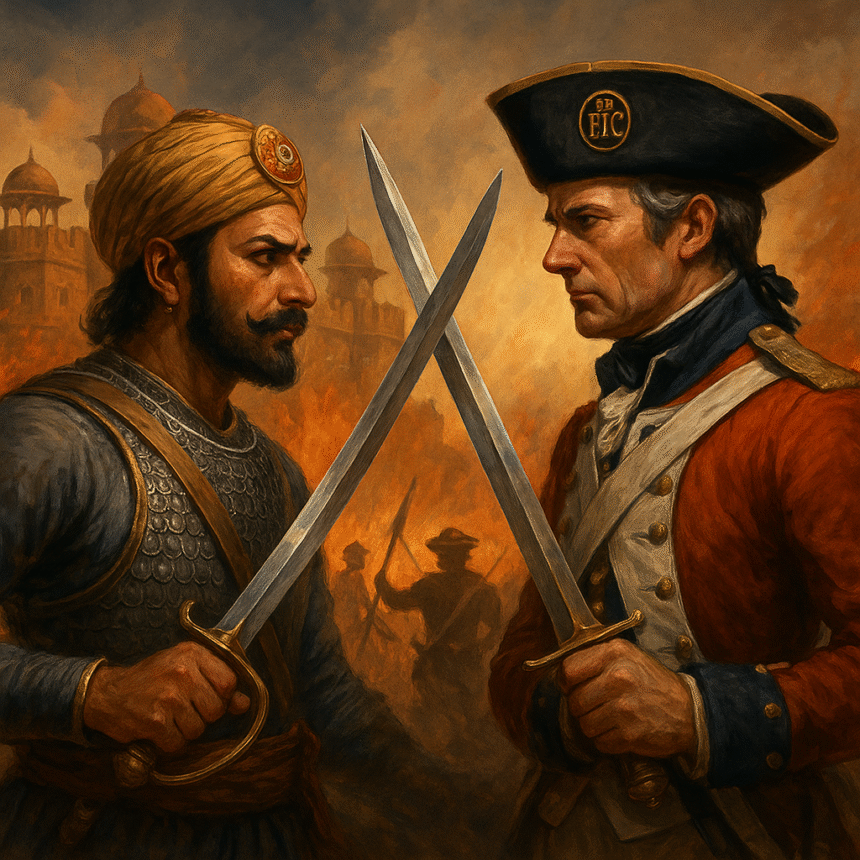
Leave a Reply